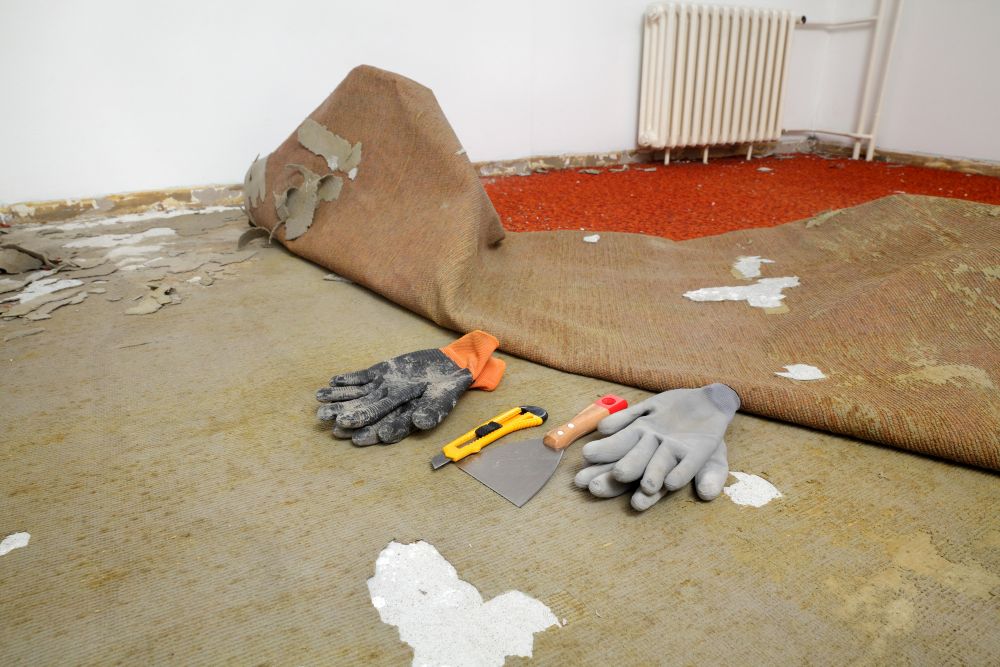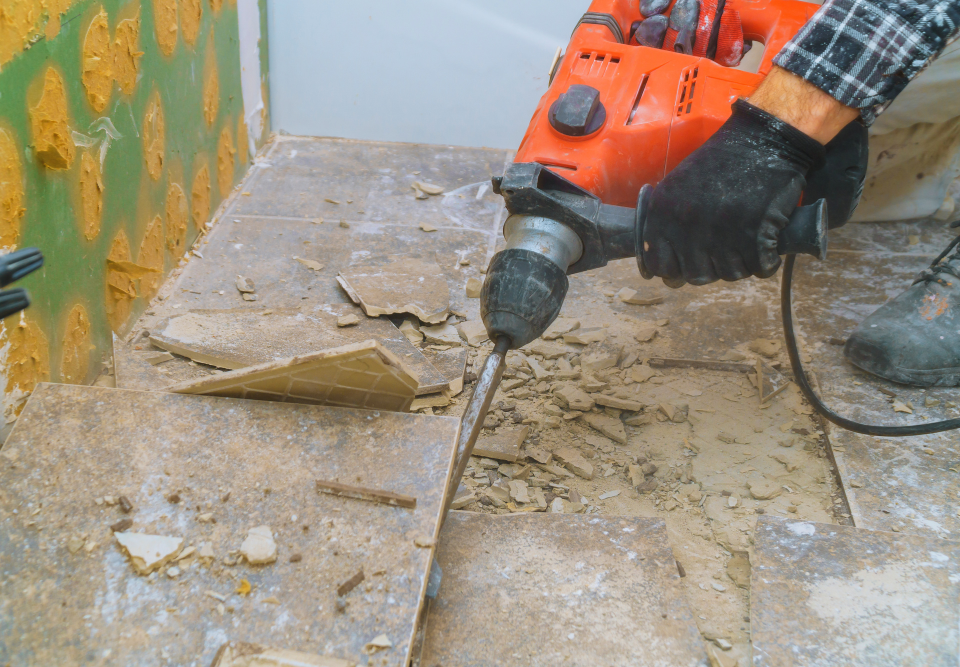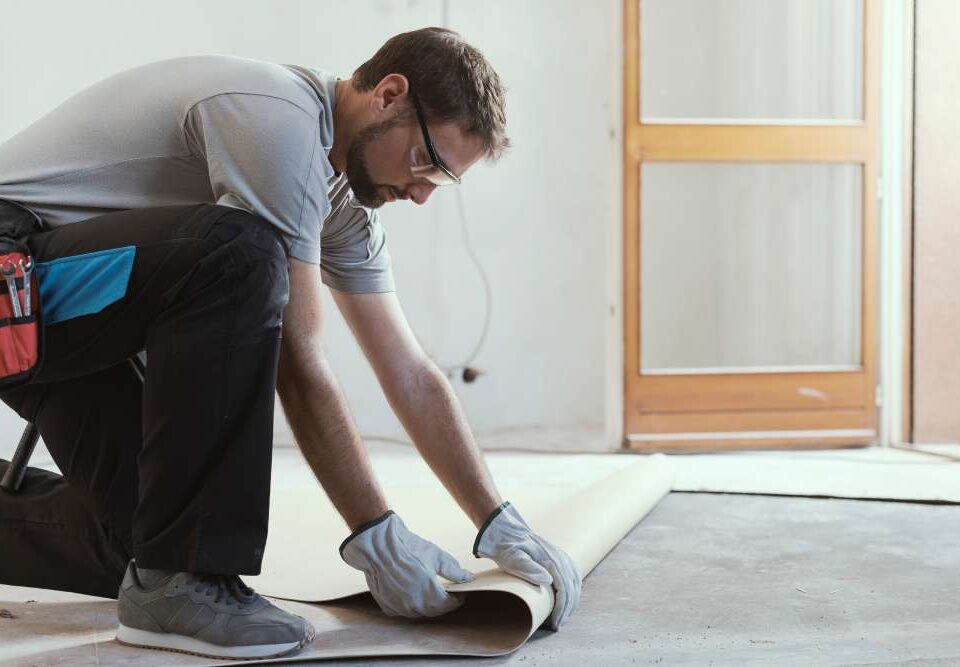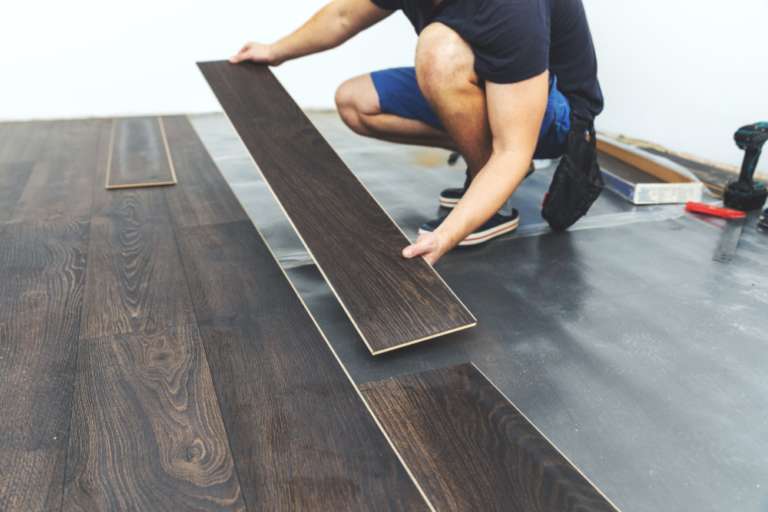
The Benefits of Hiring a Demolition Cleanup Service
September 3, 2025
Tips for Efficient Bathroom Demolition Cleanup
September 4, 2025Flooring Removal What to Expect During the Process
Understanding the Flooring Removal Process
Removing old flooring can feel overwhelming but knowing what to expect can ease the stress and help you prepare properly. The process usually begins with clearing the room completely so the removal can proceed safely and efficiently. This includes moving furniture, appliances, and any fragile items that could get damaged during the work. Professional teams often start with a careful inspection of the existing flooring to determine the type of material and how it is secured. Different flooring materials like tile, laminate, hardwood, or carpet each have unique challenges that influence the removal technique. Preparing the space also involves protecting walls and fixtures and ensuring there is adequate ventilation, especially if adhesives or old finishes will be disturbed. With the right preparation, flooring removal can proceed smoothly and safely.
The next step typically involves loosening the flooring material carefully to minimize damage to the underlying surface. Professionals use specialized tools to pry up boards or tiles efficiently while reducing debris spread. Carpets are often rolled up and padding removed in large sections, while tiles may require breaking them into manageable pieces. Dust and debris control is critical at every step, as flooring removal can create a surprising mess. Proper disposal is planned in advance to keep the work area safe and organized. Understanding these preparatory steps helps homeowners set realistic expectations and reduces surprises when the process begins.
Removing Hardwood and Laminate Flooring
Hardwood and laminate floors require a delicate approach to avoid damaging the subfloor beneath. Often, removal starts by taking out baseboards or trim to gain full access to the edges of the flooring. Crews use crowbars and prying tools to lift boards carefully, starting from a corner and working methodically across the room. Some hardwood floors are nailed or glued down, which can require additional effort to loosen boards without splitting or breaking them. Laminate flooring tends to come in interlocking pieces, which can be lifted sequentially without extensive demolition. The removal process for both types aims to recover as much material as possible, especially if any boards can be repurposed or recycled.
After lifting the flooring, attention turns to cleaning and preparing the subfloor for the next installation or refinishing. Nails, screws, or adhesives must be carefully removed to create a smooth surface. Sanding or leveling may be required if the subfloor has sustained minor damage during removal. Properly managing these finishing details ensures that any new flooring installation is stable and long-lasting. Removing hardwood and laminate flooring can take time, patience, and precision, but following a systematic approach prevents unnecessary damage and keeps the project on track.
Tackling Tile and Stone Flooring
Tile and stone flooring removal is physically demanding and requires careful handling to avoid injury and minimize dust. The process generally begins by loosening grout lines using specialized tools, which allows individual tiles to be lifted without shattering surrounding pieces. Some tiles may crack or break during removal, so wearing protective gloves and eyewear is essential. Flooring removal teams often use hammers, chisels, and pry bars to lift tiles while taking care not to damage the underlying concrete or plywood subfloor. Proper technique is crucial to reduce the amount of debris generated and ensure a safer environment for workers and homeowners.
Once the tiles or stones are removed, the subfloor often needs cleaning and smoothing to prepare for the next installation. Adhesive residues and mortar can be stubborn, requiring scraping or chemical removal methods. Dust control and ventilation remain critical at this stage, as fine particles can linger and pose a hazard. Efficient planning ensures that waste materials are gathered and transported safely, keeping the property tidy. Removing tile and stone floors may be labor-intensive, but following a strategic and careful process reduces risk and ensures the subfloor is ready for the next step.
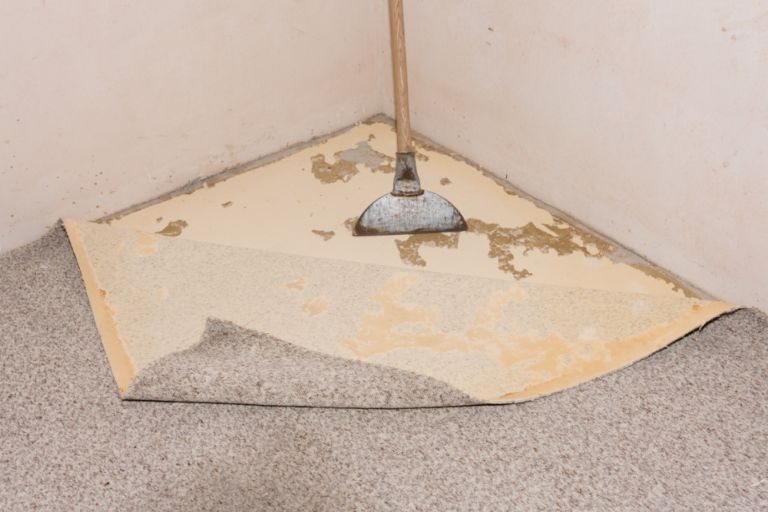
Carpet and Vinyl Flooring Removal
Removing carpet and vinyl is typically faster than hardwood or tile, but it still presents challenges. Carpet removal begins by cutting the material into manageable strips and rolling it up for disposal. Padding beneath the carpet is often removed simultaneously, revealing the subfloor underneath. Vinyl flooring may be glued or loose-laid, which affects the removal technique. Adhesive residues from vinyl floors can be stubborn, requiring scraping or chemical treatments to ensure the surface is smooth for future installations. Professionals prioritize keeping the work area clean, as carpet fibers and vinyl fragments can scatter quickly and create hazards.
Subfloor preparation is crucial once carpet or vinyl is removed. Nails, staples, and glue must be cleared thoroughly to prevent damage to new flooring. Cleaning and minor repairs may be necessary if the subfloor has been compromised or uneven. Understanding the differences between carpet and vinyl removal allows homeowners to anticipate the tools, time, and effort involved. Proper handling ensures the space is ready for a fresh, new flooring installation, and reduces the risk of hidden issues that could affect longevity.
Handling Adhesives and Underlayment
Many flooring types are installed with adhesives, which can make removal more complicated. Adhesive residues may require scraping, sanding, or specialized solvents to achieve a smooth subfloor. Underlayment, often found beneath hardwood, laminate, or vinyl floors, must also be removed carefully to prevent damage and maintain a clean base. Proper ventilation is essential when using chemical removers to protect both workers and the household. Experienced teams can identify which adhesives need extra attention and which can be removed with simpler methods, streamlining the process while keeping safety at the forefront.
After adhesives and underlayment are removed, thorough cleaning ensures the subfloor is prepared for installation. Any unevenness or lingering residue can compromise the longevity of new flooring. Professionals often check for moisture or structural issues at this stage, addressing them before moving forward. Managing adhesives and underlayment properly not only makes the process more efficient but also reduces the likelihood of future complications. Homeowners benefit from a cleaner, safer, and more durable subfloor ready for the next step.
Managing Dust and Debris
Flooring removal generates dust and debris, which can create safety hazards and affect indoor air quality. Professionals typically use tarps, plastic sheeting, and dust barriers to contain particles during removal. Vacuum systems or shop vacs are often employed to clean as the work progresses, preventing dust from settling on furniture or carpets in nearby areas. Wearing protective gear such as masks, gloves, and eyewear is standard practice to minimize exposure to harmful particles. Homeowners should also plan for ventilation by opening windows or using fans to keep air moving and reduce dust accumulation.
Efficient debris management is equally important for maintaining a safe workspace. Removed flooring materials, adhesives, and underlayment should be gathered and transported promptly to designated disposal areas. By keeping the work area organized, professionals minimize trip hazards and streamline cleanup. Proper dust and debris control not only protects the health of everyone involved but also ensures a smoother and faster flooring removal process. This attention to detail is crucial for both safety and efficiency.
Planning for Disposal and Recycling
Once the flooring is removed, proper disposal is essential. Different materials may require specific handling due to local regulations or recycling programs. Hardwood and laminate can sometimes be salvaged or repurposed, while tile, stone, carpet, and vinyl often need to be taken to landfills or recycling centers. Planning ahead for disposal reduces stress during removal and ensures materials are handled responsibly. Experienced teams coordinate transportation and disposal logistics to comply with environmental standards and minimize the impact on the home and neighborhood.
Recycling is increasingly important for sustainable flooring removal. Wood, metal, and even some plastics from old flooring can be repurposed, reducing waste and conserving resources. Homeowners can work with professionals to identify recyclable components, contributing to environmentally conscious practices. A thoughtful approach to disposal and recycling not only simplifies the removal process but also promotes responsible stewardship of materials, leaving homeowners with a cleaner, safer, and eco-friendlier space.
Ensuring Safety During the Process
Safety is paramount during flooring removal. Professionals use proper protective equipment and follow established protocols to reduce the risk of injury. Floors can be slippery, nails may protrude, and heavy materials require careful handling. Proper lifting techniques and teamwork help prevent strain and accidents. Electrical and plumbing elements should also be considered, as flooring removal may expose wires or pipes that could pose hazards if disturbed. Awareness of these factors allows for a controlled and safe removal process.
Homeowners also benefit from understanding safety considerations. Keeping children and pets away from the work area, clearing obstacles, and ensuring proper lighting are important steps. Professionals monitor the environment for hazards continuously and adjust their approach as needed. By prioritizing safety, the flooring removal process becomes more predictable and manageable, reducing stress and minimizing the potential for accidents or damage to the property.
Estimating Time and Cost
The duration and cost of flooring removal depend on several factors, including the size of the area, type of flooring, condition of the subfloor, and method of disposal. Hardwood or tile may take longer to remove than carpet or vinyl due to the complexity of the process. Adhesive removal, debris management, and subfloor preparation can also add time. Professional teams often provide estimates based on these variables to help homeowners plan their schedule and budget. Having realistic expectations about time and cost prevents surprises and allows for smoother project management.
Efficiency and cost-effectiveness are achieved when removal is carefully planned. Factors such as access to the space, the need for specialized tools, and coordination with disposal services all influence the overall investment. Homeowners who understand these considerations can make informed decisions about hiring professionals, preparing the space, and setting a reasonable timeline. Accurate estimates and clear planning help ensure the flooring removal process is efficient, predictable, and stress-free.
Preparing for New Flooring Installation
The ultimate goal of flooring removal is to prepare the space for new flooring installation. Once the old flooring is gone and the subfloor is cleaned, leveled, and repaired, the room is ready for its next phase. Professionals may provide guidance on whether additional treatments, moisture barriers, or underlayment are necessary before installing new flooring. Proper preparation ensures that the new flooring lasts longer, looks better, and performs well under daily use.
Homeowners benefit from understanding that flooring removal is not just about demolition but about setting the stage for a successful renovation. Thoughtful preparation includes checking for structural issues, addressing any moisture or unevenness, and ensuring the subfloor is pristine. With the right approach, removing old flooring becomes a crucial step toward achieving a polished, durable, and aesthetically pleasing new floor that meets both functional and design goals.
Conclusion
Flooring removal is a complex process that requires careful planning, attention to detail, and a focus on safety. From preparing the room and assessing the type of flooring to managing adhesives, dust, and debris, each step contributes to a smoother and more efficient project. Professionals bring the expertise, tools, and techniques necessary to ensure the subfloor is preserved and ready for new installation. Homeowners can benefit from understanding what to expect, allowing them to make informed decisions and feel confident throughout the process. The variety of flooring types, from hardwood and laminate to tile, stone, carpet, and vinyl, each presents unique challenges that require thoughtful handling and proper disposal strategies.
Working with experienced junk removal specialists ensures that all materials are handled responsibly, whether salvaged, recycled, or safely transported to disposal facilities. By coordinating logistics, adhering to safety protocols, and managing the workspace efficiently, homeowners can enjoy a less stressful experience and a cleaner environment. For anyone in Santa Rosa seeking professional support for flooring removal or other projects, North Bay Junk Removal offers reliable, expert services. You can reach their team at 707-478-6817 to schedule assistance, making the process smoother, safer, and fully supported from start to finish.

